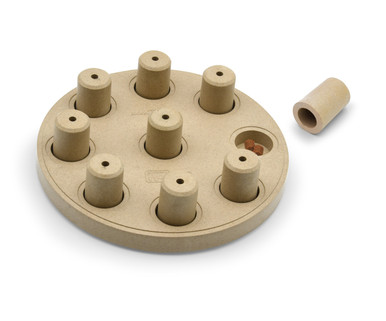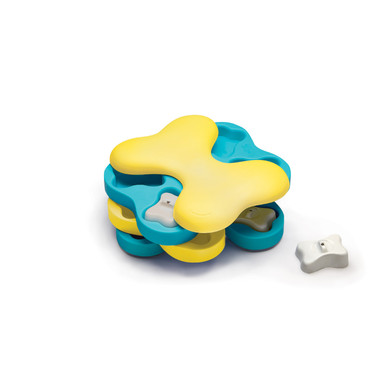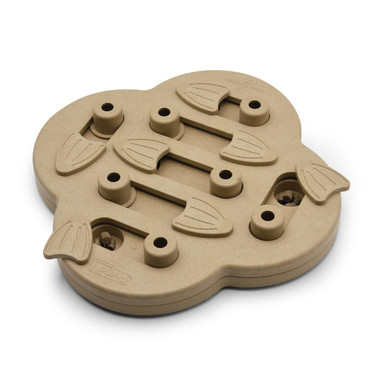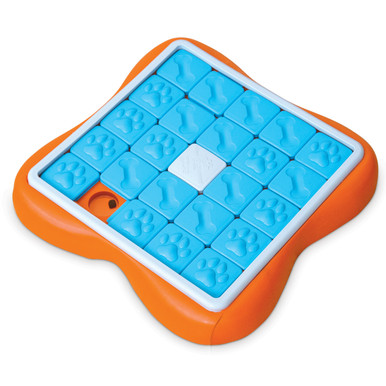Do you ever wonder how smart your dog is? It may seem like they can read our minds one day, but the next day they don’t have a clue what you’re asking. What could a dog IQ test tell us about dog intelligence?
In the hunt for this answer, we learned that renowned researcher and sociologist Stanley Coren, Ph.D., FRSC (writer of “The Intelligence of Dogs”) has developed a series of intelligence tests that make up the standard dog IQ test.
In this post, we’ll give you a background on the different ways your pooch is smart, tips for testing, and how to evaluate the results.
For the following doggy IQ test, you will need:
- Treats
- A towel or blanket
- Three plastic cups, containers, or buckets
- Cardboard
- Stopwatch
- Creativity!
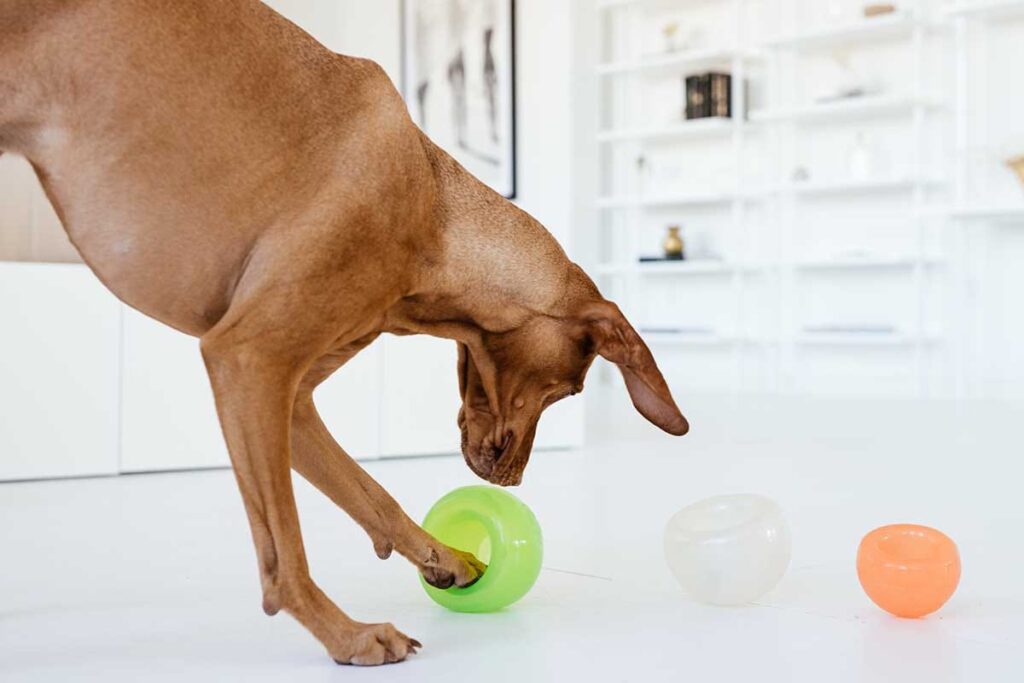
The 3 Different Types of Canine Intelligence
Like humans, dogs can have various forms of intelligence such as visual, auditory, or tactile. According to Dr. Coren, Dog Intelligence can be broken down into three groups:
- Instinct intelligence
- Adaptive intelligence
- Working & obedience intelligence
Instinct intelligence can be derived from their type of breed. Guard dogs watch over things, retrievers fetch, hounds track or pursue, border collies do herding, pointers sniff out birds and indicate their location by pointing, while companion dogs are attuned to human social signals and respond to our moods to provide comfort.
Adaptive intelligence is basically a measure of what a dog can learn to do for himself. It includes learning and benefiting from experience with his environment, solving new problems, and so forth. Adaptive intelligence can differ among individuals of the same breed.
Working and obedience intelligence is the closest to what we might call school-learning ability and is based upon what the dog can learn to do when instructed by humans/dog owners. It is important because if dogs did not respond to human instruction, they would not be capable of performing the utilitarian tasks that we originally valued them for, which means that they would never have been domesticated and wouldn’t be with us now.
With all these types of skills, it’s safe to say not one strength makes one dog smarter than another. It is simply a matter of different intelligence types.
It would be unfair to say that a dog IQ test is accurate in terms of showing your dog’s intelligence, but they are helpful in determining problem-solving and memory skills that ultimately are important cognition assessments.
Ready for the Dog IQ Test?

IMPORTANT TIPS BEFORE TEST
While there are many ways to examine a dog’s IQ, the below are variations of the standard tests from Dr. Coren, which are commonly used. These are tests that you can execute with your dog and the scoring system will keep track of intelligence.
We don’t recommend that these are all done on the same day, as your dog may not understand your unusual actions and requests and may end up feeling overwhelmed.
Last, but not least – don’t be negative! The idea is to treat these tests as games and make them a fun time for both of you. And always – no matter how high or low they score – give your smart dog lots of love and positive attention afterward.
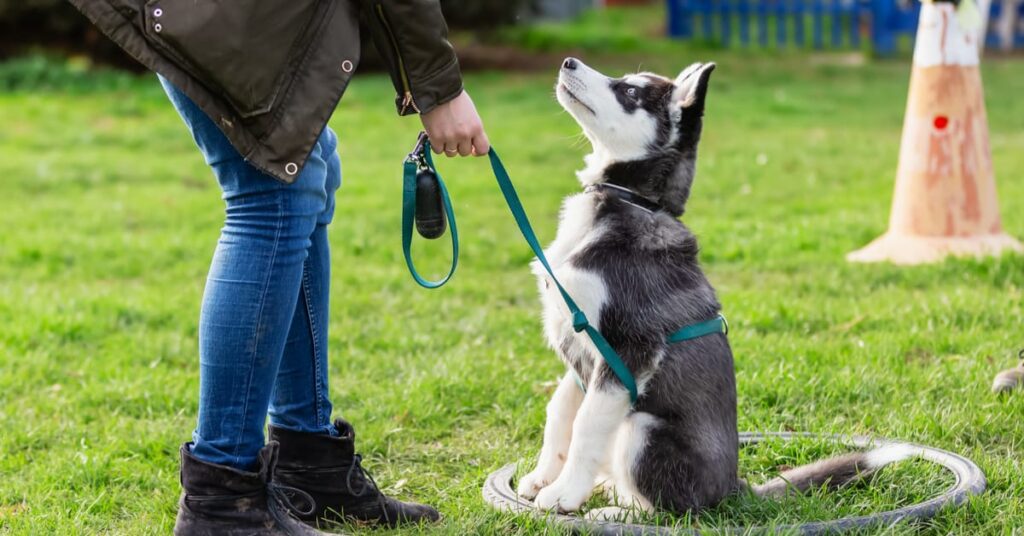
Test 1: The Towel Test
Allow your dog to smell and get familiar with a large towel or blanket. Once comfortable, place it over your dog’s head. This task will provide insight into your dog’s ability to solve problems.
Scoring: Give your dog three points if he figures out how to free himself in under fifteen seconds, two points if it takes fifteen to thirty seconds, and one point if it takes more than thirty seconds.
Test 2: Hidden Treat Test
Place a treat on the floor and place a towel over it. Grab your stopwatch and see how long it takes for the dog to get the treat.
Scoring: Give your dog three points if he figures in under fifteen seconds, two points if it takes fifteen to sixty seconds, and one point if it takes more than sixty seconds.
Test 3: Which Cup?
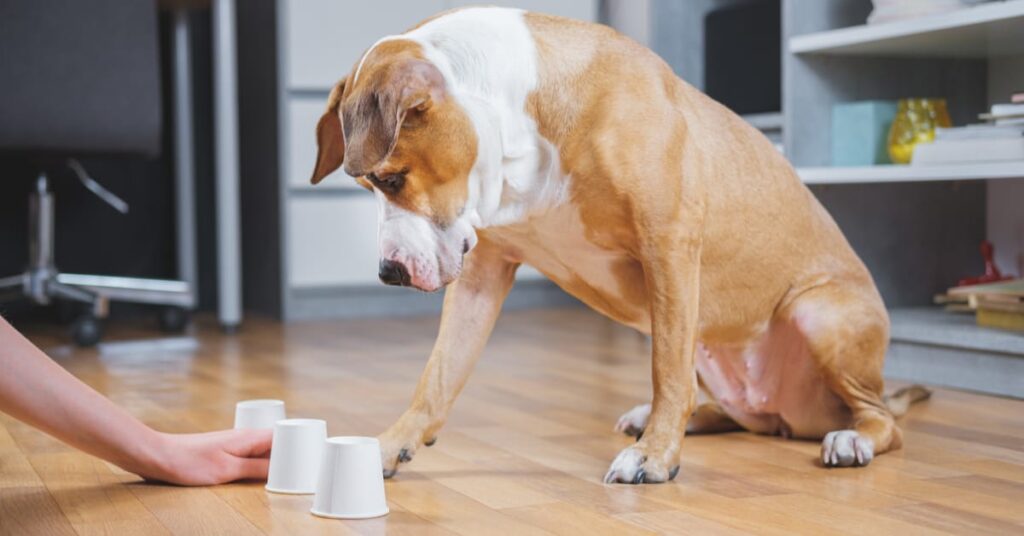
Place two or three empty buckets or cups upside down in a row. While your pup watches, place a treat under one of the containers. Distract him for a few seconds before allowing him to look for the treat. This will test your dog’s memory and will help determine how well your dog can learn and retain information.
Scoring: Give him three points if he goes straight to the container hiding the treat, two if he checks one empty container before finding the right one, and one point if he checks both wrong containers before locating the treat.
Test 4: Problem-Solving
Underneath a piece of furniture (low enough to the ground that only your dog’s paw will fit), place a treat or dog food within the paw’s reach. This task will test your dog’s reasoning and problem-solving skills.
Scoring: Give your dog three points if it takes him under a minute to reach for the dog treat using only his paw. If he tries to fit his head into the space first or uses both his nose and paws, give him two points, and one point if he gives up entirely.
Test 5: Beyond the Barrier
This one will require a bit of creativity on your behalf but nevertheless, it is a good test to give your dog. Show your dog a treat through a slit in a large cardboard barricade that is too high to be jumped by the dog, and the slit itself is too narrow for the dog to fit through.
You, as the handler will have to keep encouraging the dog to get the treat for exactly 60 seconds and then stop. Use your stopwatch to keep track of the dog’s time and score accordingly.
Scoring: Give your dog three points if he takes 30 seconds (or less) to figure out he needs to walk around the barrier to get the treat. If he takes longer than 30 seconds to figure it out, give him two points, and one point if he tries to climb through the window or bulldoze his way through the barrier instead of going around.
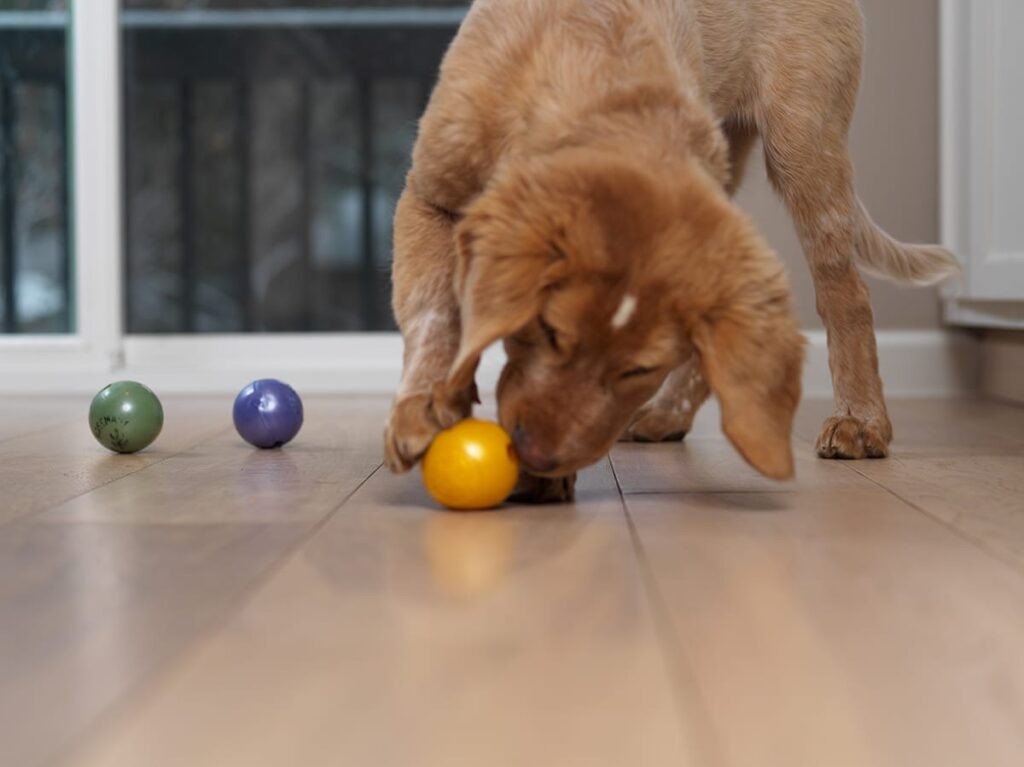
Results
- 13–15 points: PAWsome! Your dog is a genius.
- 9–12 points: Your dog’s not quite Einstein but he’s still a smart cookie.
- 5–8 points: Your dog won’t make it to Harvard but he has paw-tential.
- 1–4 points: Your dog might need some help figuring things out and getting things done. Fur-tunately, it doesn’t take brains to give cuddles and kisses—which is all that matters, right?
How can I improve my dog’s score?
- Try finding the most desirable treat for your pup. If they are not excited about the reward, they won’t work as hard. This can be real pieces of meat, cheese, or any other yummy indulgences.
- Try Puzzle Games! Interactive dog toys challenge your dog’s problem-solving skills and enhance their cognitive abilities through play.
- Give them time! Hard work does not pay off overnight, so be patient with your pup and keep on practicing!
Score-improving puzzle games
Dog Smart Composite Interactive Treat Puzzle Dog Toy, Tan
$16.99 $11.99
The Nina Ottosson by Outward Hound Dog Smart Composite interactive dog puzzle is a fun way to get your dog excited about problem solving games! This mind-stimulating level 1 dog toy features nine treat hiding compartments that can be filled with your pup’s favorite treats and covered with nine pegs that release the tasty scent of treats through the top hole. Place on the ground and watch your dog use his…
Dog Tornado Interactive Treat Puzzle Dog Toy, Blue
$19.99 $18.99
The Dog Tornado level 2 interactive dog puzzle from Nina Ottosson is the ideal toy for bored dogs and will keep them occupied for hours! This intermediate level toy features three tiers with twelve compartments for dog snacks or kibble. This mentally stimulating and entertaining dog game encourages your pup to spin the interactive puzzle tiers to reveal the rewards – three bone shaped covers can be used…
Dog Hide N’ Slide Interactive Treat Puzzle Dog Toy, Tan
$24.99 $19.99
The Nina Ottosson by Outward Hound Interactive Dog Hide N’ Slide puzzle game is a fun way to engage your dog’s mind and activate their problem solving-skills. This level 2 intermediate puzzle dog toy comes with two types of hiding spots for snacks or kibble for a total of 14 treat compartments: under the swivelling flippers and in the hollow sliding blocks. You can vary the difficulty level by placing…
Challenge Slider Interactive Treat Puzzle Dog Toy, Multi
$32.99 $25.99
The Challenge Slider dog puzzle from Nina Ottosson by Outward Hound is an advanced level 3 game designed for pups who have mastered levels 1-2. This dog toy will promote the mental wellbeing of your dog by keeping them active and engaged while sniffing, nudging, and pawing for hidden treats! A sliding tray pulls out from underneath with 24 compartments that can hold up to 1 cup of food total…
